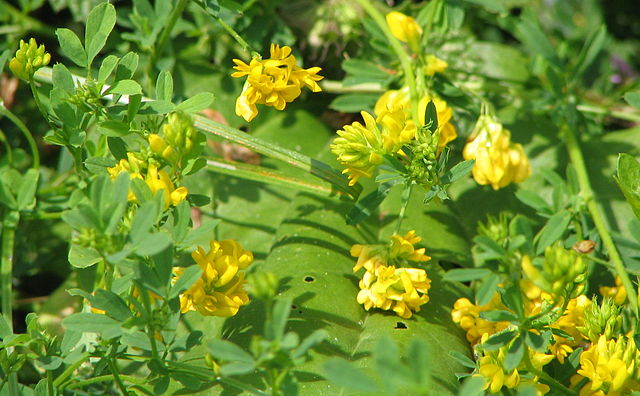 |  |  |  |  |
 |  |
Sickle Medick is a perennial plant, the stems of which can grow up to 50 cm. The stems are lying or raised. The leaves are triangularly composed of three inverted ovoid leaflets. The edges of the leaves are toothed. The spikes of the pilapia are fused half way with the stem.
The flowers are yellow, 15-30 arranged in bunch inflorescences, in the axils of the upper leaves. The fruit is a sickle-shaped pod. The plant blooms from May to September.
For medicinal purposes, the above-ground part of the plant, more often only the tops, is collected during its flowering. Drying is carried out in well-ventilated and shaded places, it may be dried in forced dryers not exceeding 40C. Store in a breathable container for no longer than 2 years.
Lucerne contains saponins, alkaloids, carotene, ascorbic acid, vitamin K, flavonoids and coumestrol. In principle, the plant has been studied little, from its medicinal effects, because Sickle Medick is most often used in fodder.
The plant also contains sufficient amounts of calcium and magnesium, steroids, chlorophyll, beta-carotene, vitamin B6.
Medicinal significance
In medical treatment, the plant is more often used in folk medicine as a diuretic, anti-inflammatory, immunity-boosting, anti-fever, bactericidal, wound-healing, tonic, body-strengthening and metabolism-boosting agent.
Sickle Medick is useful for treating colds, urinary tract, kidney diseases, stomach ulcers, diabetes, pyelonephritis, cystitis, arthritis, gout, anemia, dermatological diseases, atherosclerosis. In addition, the plant will also help in stressful situations to reduce nervous tension, as well as to remove excess toxins and cholesterol from the body.
